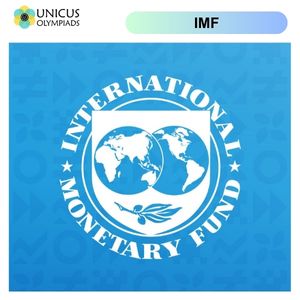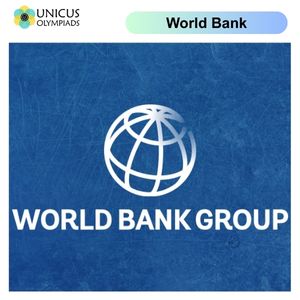

International organizations like the International Monetary Fund (IMF) and the World Bank play a critical role in the global economy. These institutions help stabilize economies, promote development, and provide financial assistance to countries facing economic challenges. At the same time, inequality—both within and between countries—remains one of the most significant challenges for sustainable development. This article explores the functions of the IMF and the World Bank, their roles in addressing economic disparities, and how inequality is measured globally. It also discusses the practical implications of these measurements for policy and development.
The International Monetary Fund (IMF) is an international financial institution established in 1944 with the primary goal of promoting global monetary cooperation, securing financial stability, facilitating international trade, promoting high employment and sustainable economic growth, and reducing poverty around the world. The IMF provides financial assistance and policy advice to its 190 member countries to help them stabilize their economies during times of financial distress.

The IMF's policies and financial assistance can have mixed effects on inequality. In some cases, IMF-led programs, such as Structural Adjustment Programs (SAPs), have been criticized for disproportionately affecting the poor, as they often require countries to implement austerity measures, reduce public spending, and privatize state-owned enterprises. These measures can lead to higher unemployment, reduced social services, and increased inequality, especially in developing countries. However, the IMF has evolved over time and has taken steps to mitigate the social impact of its programs, encouraging the inclusion of social safety nets and poverty reduction strategies in its lending conditions.
The World Bank is another key international financial institution that provides financial and technical assistance to developing countries for development projects. Its primary goal is to reduce poverty and promote shared prosperity by providing long-term loans and grants for projects related to infrastructure, education, health, agriculture, and other sectors that contribute to economic development.

The World Bank's efforts to reduce poverty and promote sustainable development have had a significant impact on global inequality. By financing infrastructure projects and promoting human capital development, the World Bank has contributed to raising living standards and reducing poverty in many countries. However, the organization has also been criticized for focusing too heavily on economic growth without adequately addressing the social and environmental dimensions of development. Some World Bank-funded projects have been associated with environmental degradation and displacement of marginalized communities, leading to increased inequality in certain regions.
Inequality is a major concern for both the IMF and the World Bank. Economic inequality refers to the disparity in the distribution of wealth, income, and resources within and between countries. Inequality is often measured using several different indices and tools that quantify disparities in income, wealth, and access to resources.
The Gini coefficient (or Gini index) is one of the most commonly used measures of inequality. It is a statistical measure that quantifies income or wealth distribution within a country, ranging from 0 to 1. A Gini coefficient of 0 represents perfect equality (everyone has the same income), while a Gini coefficient of 1 represents perfect inequality (one person has all the income, and everyone else has none).
The poverty rate is another critical measure of inequality. It refers to the percentage of a population that lives below the poverty line, typically defined as earning below a certain income threshold (often adjusted for inflation and purchasing power parity). High poverty rates are often indicative of significant economic inequality, as large segments of the population may not have access to the resources necessary to meet their basic needs.
Income distribution is another way to measure inequality. This refers to how income is distributed across different segments of the population. A highly unequal income distribution means that a small percentage of the population controls a large share of the national income, while the majority of people have relatively low incomes.
Both the IMF and the World Bank play vital roles in addressing global inequality by providing financial resources, policy advice, and technical assistance to developing countries. However, their approaches to inequality differ based on their missions and the strategies they employ to promote economic development and poverty reduction.
The IMF’s role in reducing inequality is primarily focused on promoting macroeconomic stability, fiscal responsibility, and balanced economic growth. While the IMF has faced criticism for its austerity measures, it has increasingly recognized the importance of addressing inequality. In recent years, the IMF has shifted its focus toward promoting inclusive growth, emphasizing the need for policies that reduce income disparities and protect vulnerable populations.
The World Bank has a more direct focus on reducing poverty and inequality through its development projects and financial assistance. It funds programs aimed at improving education, healthcare, and infrastructure in developing countries. The World Bank also supports income redistribution initiatives and focuses on empowering marginalized communities to ensure that development benefits are equitably shared.